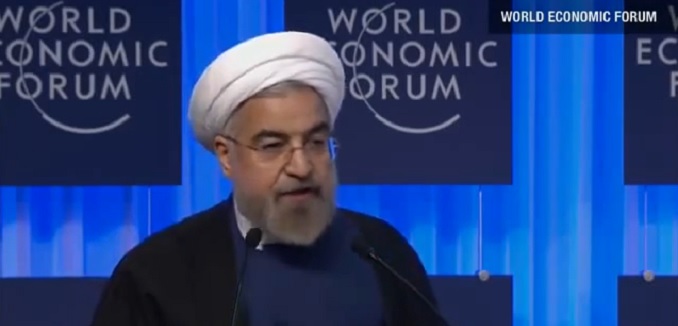Top Iranian officials this week reemphasized Tehran’s stance – articulated recently by among others President Hassan Rouhani, Foreign Minister Mohammad Javad Zarif, and former top nuclear negotiator Hossein Mousavian – that the Islamic republic refuses to dismantle even minimal elements of its nuclear infrastructure in the context of a comprehensive nuclear agreement between the country and the international community. Zarif on Wednesday again rejected Western demands that Iran take apart uranium enrichment and plutonium producing equipment.
“Iran’s nuclear technology is non-negotiable and comments about Iran’s nuclear facilities are worthless and there is no need to negotiate or hold talks about them,” AFP quoted Mohammad Mohammad Javad Zarif as saying, citing Iranian media. “Those who know our peaceful objectives are also aware that we will not negotiate about our [nuclear] facilities,” Zarif added.
The head of Iran’s Atomic Energy Organization had earlier this week made a series of similar comments to Iran’s PressTV, boasting that Iran has not dismantled anything under the interim Joint Plan of Action (JPA). He emphasized that “[t]he entire nuclear activity of Iran is going on” and that “[c]entrifuges that were used for the production of 20 percent, they will be used now for producing 5 percent enriched uranium.” The boasts are likely to generate both specific and general concerns regarding the Obama administration’s negotiations with Iran. Substantively, Salehi’s boasts regarding the ongoing development of advanced centrifuges – an element of the JPA that David Albright, head of the U.S.-based Institute for Science and International Security (ISIS), identified this week as a gaping “loophole” – are likely to prove particularly controversial.
In particular, Iran can continue its development of the IR-2m centrifuges at the Natanz pilot plant under this loophole in the interim deal. It can enrich uranium in a production-scale cascade of 164 IR-2m centrifuges. Since it remixes the enriched uranium product with the waste or “tails,” obtaining natural uranium, no enriched uranium is deposited into the product tanks. This remixing meets the “letter of the deal.” However, Iran is able to measure the enrichment level of the product before remixing it. Thus, it can further develop the IR-2m centrifuge while hiding any results of its progress from the IAEA, which has access only to the product tank or the natural uranium and does not see the enrichment measurements. At the end of the interim period, Iran is likely to be far better positioned to deploy reliable IR-2m centrifuges on a mass-scale at its enrichment plants. This gain would allow Iran to make up for time lost more quickly.
More broadly, White House and State Department officials seem to have settled on talking points suggesting that “dismantlement of significant portions of [Iran’s] nuclear infrastructure” will be a topic for some time in the future, and that in the meantime journalists should focus on the JPA’s implementation. The administration has been pressed its logic, wherein statements trumpeting Iranian intransigence are brushed off as domestic chatter while statements signaling moderation are taken as reliable indices to regime intentions.
[Photo: CURRENT BUZZ / YouTube]




